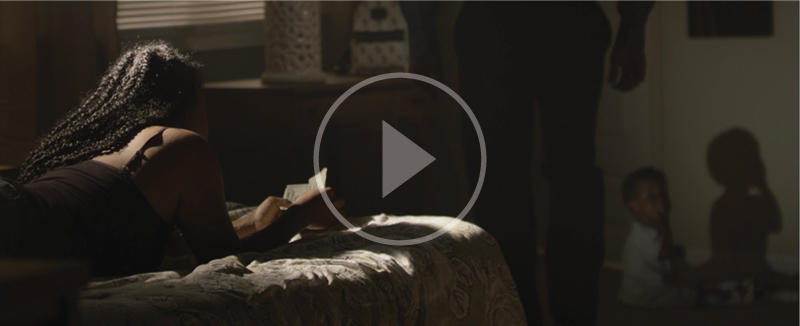
The Triune Care Model© (TCM) was developed by the Institute for Shelter Care, in collaboration with other shelter leaders nationwide. TCM is a framework for attending to the complex needs of victims of sexual exploitation. It is intended to be used within the setting of a residential recovery program because of the unique proximity, access, and relational intimacy that can occur in that setting. TCM is predicated on a set of beliefs about how human beings are designed and function, how true change happens within human beings, and the conditions under which positive change is optimized.
Core Beliefs
- We believe in the sanctity and dignity of every human life.
- We believe people are malleable and change is possible.
- We believe abuse is defined by morality.
- We believe wounds affect the whole person; therefore, healing must address the whole person.
- We believe lasting change demands cooperation.
- We believe Time and Practice are part of the therapeutic toolset.
- We believe in a survivor-infused culture.
- We believe and know that we are not saviors; we are stewards.
TCM is predicated on the belief that transformational healing happens in a triune relationship, that is, when three relationships come together in synchronicity: the Survivor, the Caregiver, and the Holy Spirit of God. In each of the domains presented, there is:
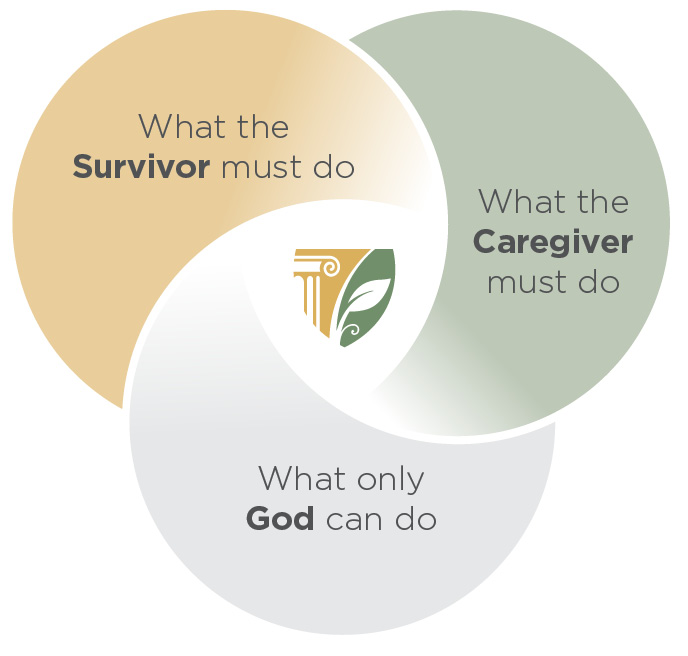
- What the Survivor must do in pursuit of his/her own healing,
- What the Caregiver can do to create an optimal environment for healing, and
- What only God can do to bring about lasting change.
TCM bears strong alignment with what is considered the gold standard model for treatment of complex trauma, which is a phased-based model with three areas of attention: (1) safety/stabilization, (2) trauma integration, and (3) reintegration into the community.1, 2 TCM offers 3 phases of progression (Stabilization, Growth, and Independence); however, TCM expands into nine domains of intention, areas of human well-being and flourishing. These domains present in varying degrees based on the individual’s needs and resources.
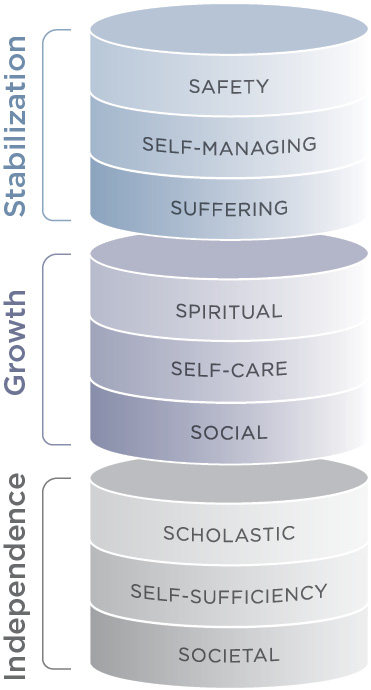
Stabilization
The first three domains (Safety, Self-Managing, and Suffering) are the primary considerations for achieving the goal of Stabilization. Until threats, dysregulation, and distress are addressed and sufficiently under control, the Survivor cannot devote energies towards areas of new growth or independence—at least not in a sustainable way. Skipping these steps or rushing the process is a recipe for discouragement, relapse, or futility.
Growth
The second grouping of domains (Spiritual, Self-Care, and Social) cluster under the goal of Growth. In many ways, these domains in action show us the human spirit and its innate desire for love, knowing we are worthy of love, showing self-love, and/or learning how to be loving towards others. While exciting, this is also a very fragile stage that cannot be rushed. Time and practices are vital in these domains.
Independence
The final cluster of domains (Scholastics, Self-Sufficiency, and Societal) attends to those areas of a person’s life that directly correlate to self-esteem and personal agency: the power the Survivor could have in the world, his/her ability to take care for Self, and the individual’s contribution to and relationship with society.
Movement of TCM
Across the Stabilization domains the movement is downwards towards simplicity. Structures and boundaries are put in place to lessen the chaos, to reduce the number of variables, distractions, stimuli, especially those that are harmful. In Stabilization, the movement is to bring down (eliminate, dismantle, release) that which is impeding progress.
The Growth domains are the Survivor’s opportunity to spread outward, to try new things, to discover what may have been there all along but was inhibited by the chaos. The objective is to grow in a way that establishes a new foundation introducing or cultivating opportunities in one’s soul, one’s being, and one’s sphere of influence.
The Independence domains build upon the new foundation. Here the Survivor is adding new elements into his/her life, of her own choosing, taking on responsibilities and relationship—while simultaneously accepting limitations—to move in the direction of realizing one’s desired future and possessing a sense of autonomy, agency, and belonging.
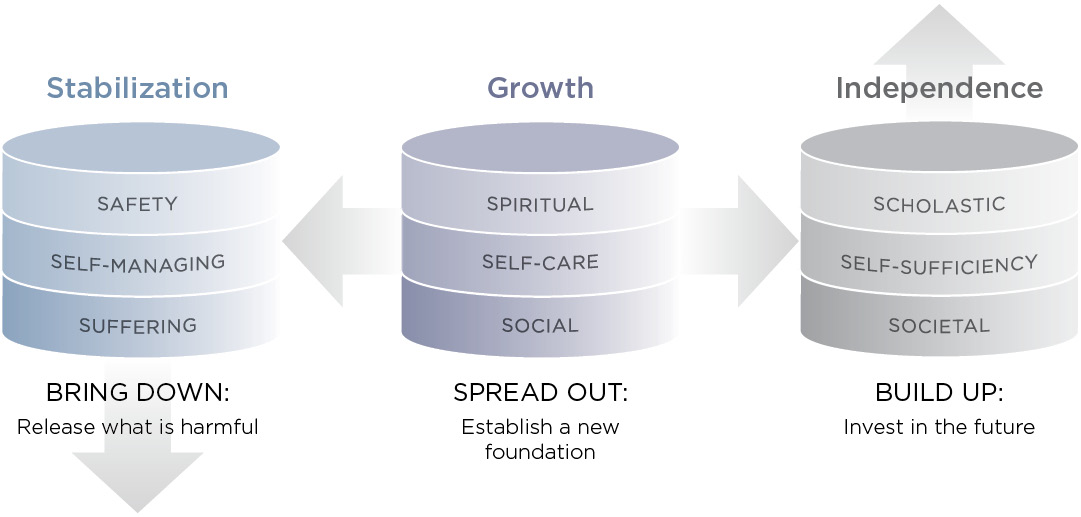
Confrontations of TCM
Another important way to view the Model is through the construct of what is being confronted and changed in each of the domains. By stacking the clusters side-by-side and reading horizontally, it may be easier to see the pattern.
- The top-level domain in each cluster is about Perception, how the Survivor perceives threats (Safety), perceives one’s being (Spiritual), and perceives one’s abilities (Scholastic).
- The middle level focuses on the Self in terms of personal Agency, in controlling oneself (Self-Managing), caring for oneself (Self-Care), and producing outcomes by oneself (Self-Sufficiency).
- The bottom level are the domains of Relationship: those who have caused the Survivor pain (Suffering), those who provide comfort, companionship, and growth (Social), and those with whom s/he shares the world (Societal).

Applying TCM
The nine domains presented in the Model are not linear. Each must be considered and as part of a whole process, but are not isolated steps that, once completed, progress onto the next step. Nor is TCM an ala carte menu from which the program or Survivor makes selections. While variances are expected, an individual domain cannot be negated entirely and still honor the integrity of the Model. TCM is to be considered in both in its parts and its entirety.
The Institute has developed its training curriculum and resource materials around the tenets of TCM. We have also constructed individual progress markers and assessment tools to aid Shelter staff in baselining the Survivor’s needs and assessing the individual’s progress.
The manuscript detailing TCM is still in production and is expected to be published in 2023.
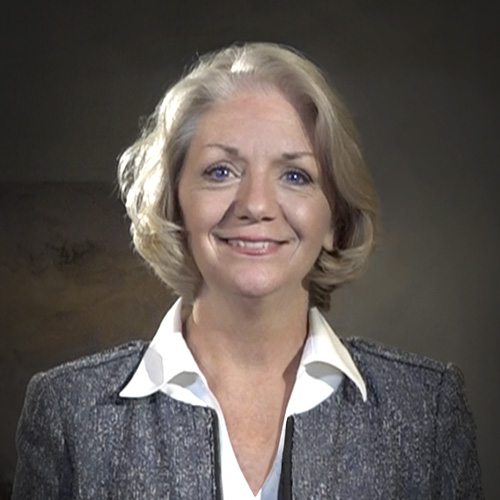
Have a question?
If you have any questions regarding our Triune Care Model, please contact Jeanne Allert, Ph.D at jallert@instituteforsheltercare.org


